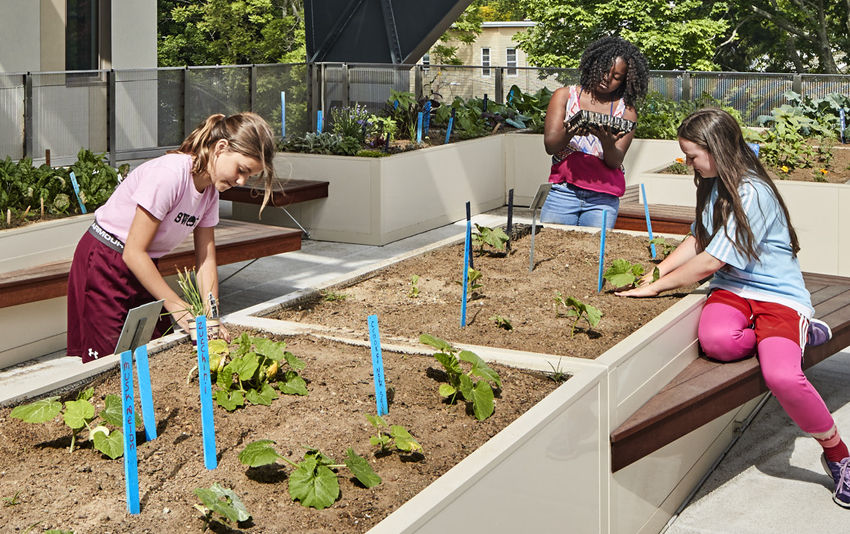
Martin Luther King Jr. School in Cambridge, MA, USA
School districts across the country are welcoming their K-12 students back to school, nearly six months since the pandemic forced remote “emergency learning”. These re-entry plans vary in approach, ranging from hybrid models — teaching students through both in-person and online instruction — to continued distance learning.
Like every discipline in design, from healthcare to workplace, from large-scale to education, COVID-19 has disrupted the way we think about learning environments.
Its overwhelming impact has underscored the many and varied roles a school occupies within a community: education, child care, healthcare, food, emergency shelter, among other vital services. These services embed schools into the communities they serve. As central hubs, where future minds are molded, fed, and cared for, schools have become the heart of our communities.
Throughout this pandemic, remote learning has robbed our children of essential services provided by schools. Some have been left without food and access to technology. Many educators have been forced to swiftly adapt to teaching entirely online. As part of our efforts to understand the effects of remote learning on education, the Design Strategy Team at Perkins Eastman surveyed our employees and their children in 13 offices across North America and two of our offices overseas to understand their perceptions of “emergency learning”. Recognizing that our staff is only a small subset of a much larger and more diverse K-12 population, we bolstered our survey with leading industry research and our ongoing roundtable series with educators as part of a consortium with Drexel University’s School of Education. These research efforts culminated in our Insights Report: Re-learning K-12 Education Part I.
Three important themes emerged from our research that highlight new considerations for designing educational spaces going forward: learning, socialization, and resources/services.
Understanding schools through this larger lens, taking into account all the services schools provide, enables our designs to better advocate for policies and decisions that have implications on the ultimate success of students, and the future of our communities.

Martin Luther King Jr. School in Cambridge, MA, USA



